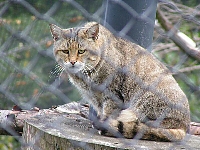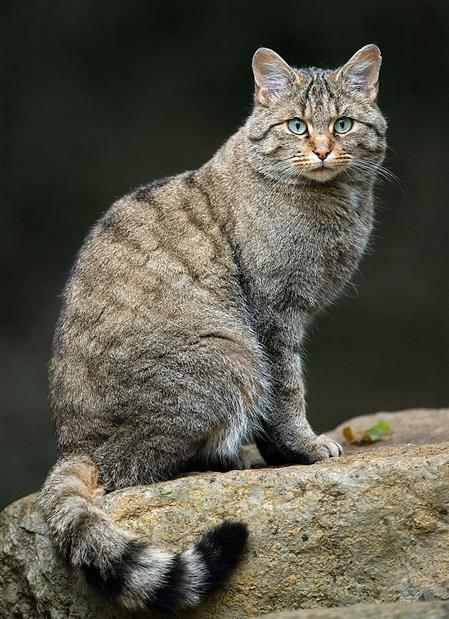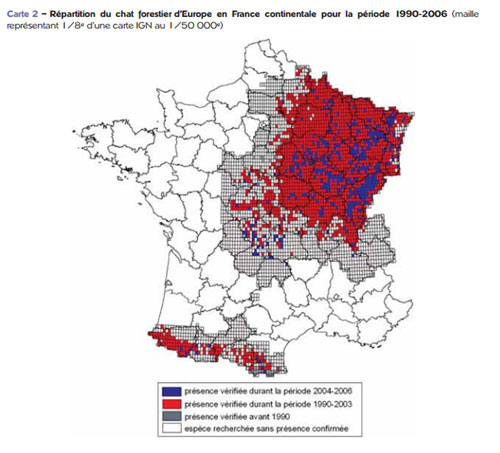





|
European wild cat
Felis silvestris
silvestris
Chat
forestier
|
|
The Wildcat has a very broad
distribution, found throughout most of
European wildcats are a little larger than the average domestic cat, measuring between 70 cm and 1 metre in length (including the tail), with an average weight of around 4 to 5 kg in males and between 3.5 and 4 kg in females. Body mass of individuals can vary greatly depending on the season as with many mammals.
They have a long, thick coat, broad head, and comparatively flat face. The coat has a base colour of tan or greyish tan with defined black or dark stripes on the head, neck, limbs, along the back. These are connected to a rather distinct black dorsal line that starts between the shoulder blades and runs until the end of the body (but not the tail). The tail is cylindrical, has black rings (more marked towards the end) and a thick black terminal end (about 3.5 to 4 cm wide) as opposed to the domestic cat in which it is tapered.
The Wildcats cat skull is larger, its hind legs are short and strong and the fur is thicker than the domestic cats, giving it a compact, chunky look.
However, hybridization occurs between the Wild cat and
domestic cat, especially between strays and feral animals
making it impossible to distinguish visually with
certainty with genetic analysis the only 100% certain
method.
Generally a species in
Diet is principally small and medium mammals, voles,
shrews, rabbits etc. Birds, hares, insects and some
reptiles will be taken to a lesser extent.
Like most wild cats they are very sensitive to the same
viral diseases of domestic cat (typhus, feline AIDS,
feline leukaemia). The epidemiology and impact of these
diseases on wild cat populations isn’t known.
The fragmentation of forested
areas is a definite threat to the populations of wild cat
in
Fully protected species in
|



